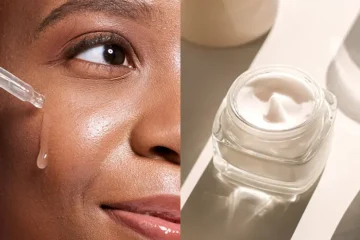Greenhouses are a great way to extend the growing season and provide a controlled environment for plants to thrive. In New Zealand, where the weather can be unpredictable, having a small greenhouse can make a significant difference in the success of your gardening efforts.
Whether you are a seasoned gardener or just starting out, setting up and maintaining a small greenhouse requires careful planning and attention to detail. Here are some valuable tips to help you get started:
1. Choose the Right Location
When setting up a small greenhouse, the location is key. It should receive an adequate amount of sunlight throughout the day, especially in the morning and early afternoon. Make sure the site is level and well-drained to prevent waterlogging. Additionally, consider proximity to a water source for easy watering.
When setting up a small greenhouse, the location is key. It should receive an adequate amount of sunlight throughout the day, especially in the morning and early afternoon. Make sure the site is level and well-drained to prevent waterlogging. Additionally, consider proximity to a water source for easy watering. This will help provide the ideal conditions for your plants to thrive and grow successfully.
2. Select the Appropriate Size
Consider the space you have available and the plants you want to grow when choosing the size of your garden greenhouse. A small garden greenhouse may be sufficient for beginners or those with limited space, while larger structures offer more versatility but require more maintenance.
Small greenhouses are ideal for beginners or those with limited space. They are easier to manage and require less maintenance compared to larger structures. On the other hand, larger greenhouses offer more versatility in terms of the variety and quantity of plants you can grow.
However, they also require more maintenance and upkeep. When choosing the size of your garden greenhouse, consider the space you have available and the types of plants you want to grow to ensure you select the best garden greenhouse for your needs.
3. Invest in Quality Materials
Opt for durable materials that can withstand the New Zealand climate. Polycarbonate panels are a popular choice for greenhouse glazing as they are lightweight, shatterproof, and provide good insulation. Aluminum frames are sturdy and resistant to rust, ideal for humid greenhouse conditions.
Stainless steel hardware is recommended to avoid corrosion in a humid environment. Additionally, choosing UV-resistant materials will help prolong the lifespan of your greenhouse.
Consider investing in proper ventilation and shading systems to regulate the internal temperature and humidity levels. Lastly, regularly maintain and clean your greenhouse to ensure its longevity in the challenging New Zealand climate.
4. Provide Adequate Ventilation
Proper ventilation is essential for regulating temperature and humidity levels inside the greenhouse. Install adjustable vents or louvers to allow for air circulation. Consider adding a solar-powered fan to improve airflow on hot days.
These features will help prevent heat buildup and excess moisture, creating a healthier environment for your plants to thrive. Proper ventilation also helps in reducing the risk of diseases and pests by maintaining optimal growing conditions. Regularly monitor and adjust the ventilation system as needed to ensure a comfortable and productive greenhouse environment.
5. Monitor Temperature and Humidity
Invest in a thermometer and hygrometer to keep track of temperature and humidity levels. Most plants thrive in temperatures between 18-24°C and humidity levels of 50-70%. Automated systems are available to help maintain optimal growing conditions.
6. Watering and Irrigation
Establish a regular watering schedule based on the needs of your plants and the season. Consider installing a drip irrigation system to deliver water directly to the roots, minimizing water waste. Mulching can help retain soil moisture and reduce evaporation.
7. Implement Good Pest and Disease Management
Preventative measures such as regular inspection, proper sanitation, and removing weeds can help reduce the risk of pests and diseases in your greenhouse. Consider using biological controls or organic pesticides if needed, to ensure the safety of your plants.
8. Regular Maintenance and Cleaning
Keep your greenhouse tidy by removing debris, old plant material, and weeds regularly. Disinfect tools, pots, and surfaces to prevent the spread of diseases. Check for any damage to the structure or equipment and make repairs promptly.
9. Utilize Shelving and Staging
Maximize space inside the greenhouse by using shelving and staging to organize your plants effectively. Consider the height and weight capacity of the shelves to accommodate a variety of plants. Utilize hanging baskets or wall-mounted pots for vertical gardening.
10. Seek Advice and Learn from Experience
Join local gardening groups or online forums to exchange tips and advice with fellow greenhouse enthusiasts. Attend workshops or seminars to enhance your knowledge and skills. Experiment with different plant varieties and techniques to discover what works best in your small greenhouse.



